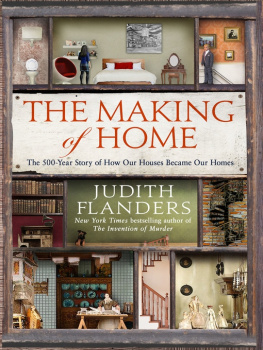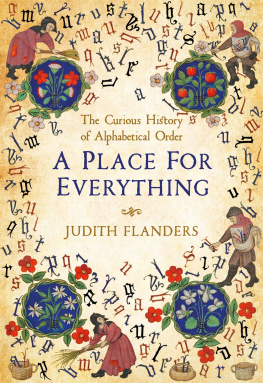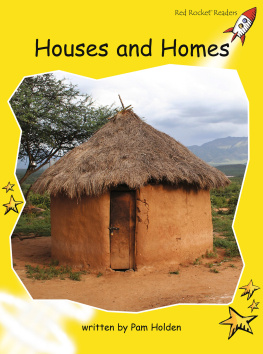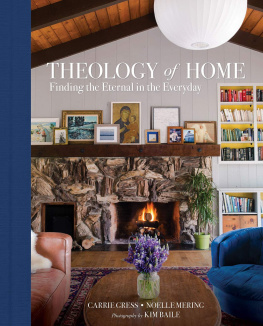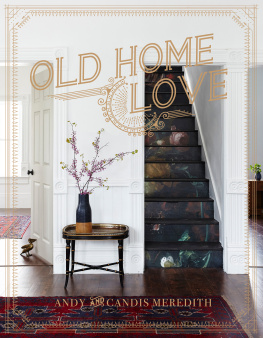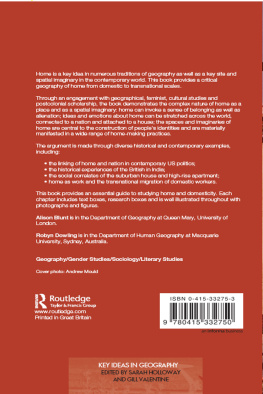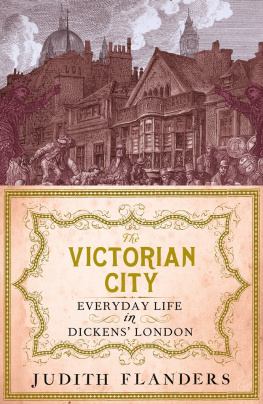Contents
Guide

The author and publisher have provided this e-book to you for your personal use only. You may not make this e-book publicly available in any way. Copyright infringement is against the law. If you believe the copy of this e-book you are reading infringes on the authors copyright, please notify the publisher at: us.macmillanusa.com/piracy.
For Naomi and Evangelia Antonakos and in memory of Stephen Antonakos (19262013)
I am grateful to those who have helped me navigate the idioms of home in various European languages: Ana-Maria Astier, Ilona Chavasse, Martijn David, Bla Dekany, Marta Frankowska-Stelmach, Tobias Hoheisel, Alice James, Donna Leon, Zoltn Matyas, Ravi Mirchandani, Jussi Mononen, Jan Morris, Ekin Oklap, Sofi Oksanen, Jasper Rees, Lise Sand, Ewa Sipta, George Szirtes, Fergal Tobin, Aksel Tollli, Jorunn Veiteberg, Hanna Weibye, Michael Wells, Shaun Whiteside and Frank Wynne. Thanks to the wonders of social media, some of these people were unaware of the ultimate destination of their information. For their disinterested good nature, I thank them twice.
Gerard van Vuuren translated several essays from Dutch for me, and I thank him for his scrupulous care.
I would also like to thank Rodney Bolt, Cathy Lennon, Laura Mason, Ninette Perahia and Bee Wilson; Gabrielle Allen, of Guys and St Thomas Charitable Foundation; Katie George, of the Salters Company; Charlotte Louise Murray, of the University of Reading; Emily Watts, house steward at Knole; and Mandy Williams and Hannah Fleming, of the Geffrye Museum. Peter Kristiansen, curator at Rosenborg Slot/De Danske Kongers Kronologiske Samling, not only responded to a strangers email promptly and courteously, but gave me additional insights into the painting in question. I am most grateful to him.
As always, the members of the Victoria mailbase fielded my seemingly random queries with good temper and, even more usefully, deep expertise. My thanks in particular for specific responses are owed to Helena Brigman, Lisa Cepluch, Amy DAntonio, David Latan, Mary Millar, Peter Orford, Malcolm Shifrin, Nancy Strickland, Elizabeth Williamson and Guy Woolnough and, as always, Patrick Leary, list-master extraordinaire. Twitter has brought me another range of experts, and I thank all those who assisted.
At Atlantic Books, Ravi Mirchandani edited this book with rigour and enthusiasm, and in so doing improved it beyond measure. I am also grateful to Karen Duffy, Richard Evans, Lauren Finger, Lucy Howkins, Toby Mundy, James Nightingale, Bunmi Oke, James Roxburgh, Chris Shamwana, Tamsin Shelton and Margaret Stead. My agent, Bill Hamilton, is stalwart, and beyond thanks. George Lucas has supplied US support, and to him I am most grateful.
Despite the efforts of all these good people to keep me on the straight and narrow, errors and omissions will inevitably have crept in. For these, as always, I am solely responsible.
In 1900, a young girl in a strange land was asked by a resident why she wasnt content to remain in their beautiful country, but instead longed to return to the dry, grey place she came from. She was astonished. She wanted to return there, she said simply, because There is no place like home. The girl was, of course, Dorothy in Oz, and only someone like the Scarecrow, famed for his lack of brains, would ask something so self-evident. To Dorothys creator, L. Frank Baum, writing at the end of the nineteenth century, it was a commonplace that home did not have to be beautiful, or luxurious, to be the place one wanted to be.
Two centuries earlier, in 1719, another novel, now known simply as Robinson Crusoe, was first published. The full title of Daniel Defoes book was not merely the name of his main character; instead it enticed readers with promises of adventure, exotic locales, violent death and more: The Life and Strange Surprizing Adventures of Robinson Crusoe, of York, Mariner: Who lived Eight and Twenty Years, all alone in an un-inhabited Island on the Coast of America, near the Mouth of the Great River of Oroonoque; Having been cast on Shore by Shipwreck, wherein all the Men perished but himself. With An Account how he was at last as strangely deliverd by Pyrates. The book was a staggering success, going through thirty-seven printings in its first eight months. Over the following century it was translated, adapted for the stage and rewritten for children; there were sequels; there was even a puppet show. Altogether, there were over seven hundred retellings of this story, in almost every form of entertainment.
Defoes novel is more than simply a rollicking tale of shipwrecks and pirates, however. It has a deserved place in the literary pantheon, not merely for the quality of its writing, but also as the first true novel in English, and among the first in any European language. It should have another place, too, among historians, for it is the first book to treat the details of ordinary domestic life as though they were as gripping as a disaster at sea or the discovery of a fabled new land. Even in the title, Crusoe is presented as not just a mariner. He is Robinson Crusoe of York a man with a home, a place where he belongs. Once he is shipwrecked, long passages in the novel dwell on the arrangements he makes to provide himself with the necessities of daily life: clothes, a razor, cutlery, even writing materials. On the island, Crusoes cave receives similar attention; its cooking, eating, sleeping and storage areas are described, as is his next house, which is a move upmarket for him this one is large enough to contain the sleeping and living areas under one roof. Then, to enjoy the Comforts I had in the World, the castaway builds furniture, and as a good householder he puts up shelves to keep his possessions tidy: everything in their Places. When, after two decades, another ship is wrecked on his island, he is thrilled to find, not weapons (he doesnt bother to take the muskets he comes across), or marine equipment to help him sail away, but a kettle, a pot to make chocolate, a fire shovel and tongs, which I wanted extremely. (He also acquires that ultimate accessory for his fireside, a dog, which he finds starving on board.) This novel, ostensibly one of Surprizing Adventures, and of a man who for twenty-eight years has no home, is nevertheless awash with notions of domesticity. Time and again Crusoe uses the word home. It is how he refers to his little tent, and in the first chapter alone the word is repeated a dozen times; over the course of the novel it appears more than sixty times, recurring like a steady heartbeat.
Home, according to the Oxford English Dictionary, is A dwelling place; a persons house or abode; the fixed residence of a family or household; the seat of domestic life and interests. But more than that, while a house is the physical structure, a home is The place where one lives or was brought up, with reference to the feelings of belonging, comfort, etc., associated with it. It is a state of being as well as the place where one lives or ones place of origin. The word itself is ancient, most likely pre-dating modern European languages and originating in an Indo-European root, kei, meaning lying down, or a bed or couch, or something dear: even then, both a place and an attitude. The first known written use of the distinction between house and home in English appeared in a poem of 1275, which mentions separately a mans lond & his hus & his hom [land and his house and his home].
To speakers of English, or the Germanic and Scandinavian languages, or the Finno-Ugric group the languages of northwestern Europe, from Hungary to Finland and Scandinavia, the German-speaking lands, and then descending to the Netherlands and across the Channel to the British Isles to these peoples, the differences between home and house are obvious. They are two related but distinct things, and therefore they have two words. In the languages of what I will call these home countries, home and house are respectively otthon and hz (Hungarian), koti and talo (Finnish), kodu and maja (Estonian), Heim and Haus (German), heem and huis (Dutch), hem and hus (Swedish), hjem and hus (Danish), heim and huset (Norwegian). Speakers of Romance and Slavic languages, living in house countries, have by contrast just one word for both meanings. When an Italian goes home he sta andando a casa, goes to the house, while the Frenchman rentre son foyer, returns to his hearth, or rentre chez lui, returns to his, with where he is returning to only gestured at by the word chez, which derives from the Latin casa. The French maison is also from Latin, mansio, staying or a stopping-place, and it follows the Latin in referring to both a building and those who occupy it: someone from une grande maison is from an important family. (English has this usage, but confines it to the very grandest of families the House of Windsor, or of Atreus.) Slavic languages are similar in folding house and home together: Russians and Poles live in a dom, and return housewards, domoi and do domu, when they go home. In Russian, the nineteenth-century word for house, dvor, encompassed not merely the house and the people who lived in it, but any stables, workshops or other farm buildings, and even the measurement of human labour. Linguistically, the house was inseparable from those who lived in it, united by kinship and economic ties, and from the labour and land it took to maintain them.

